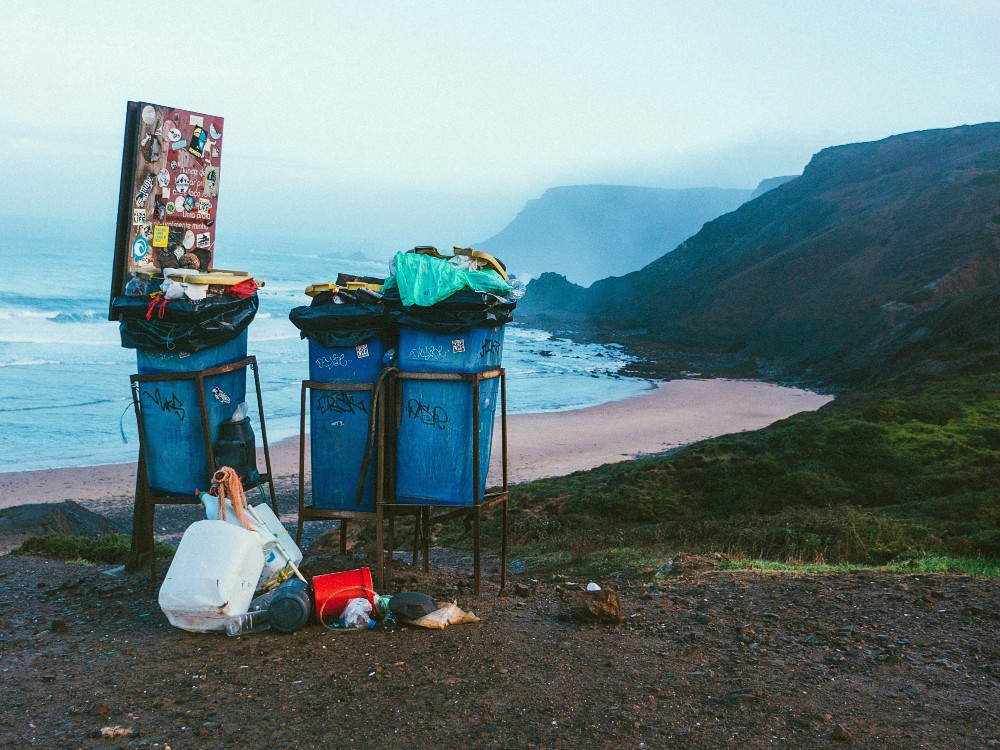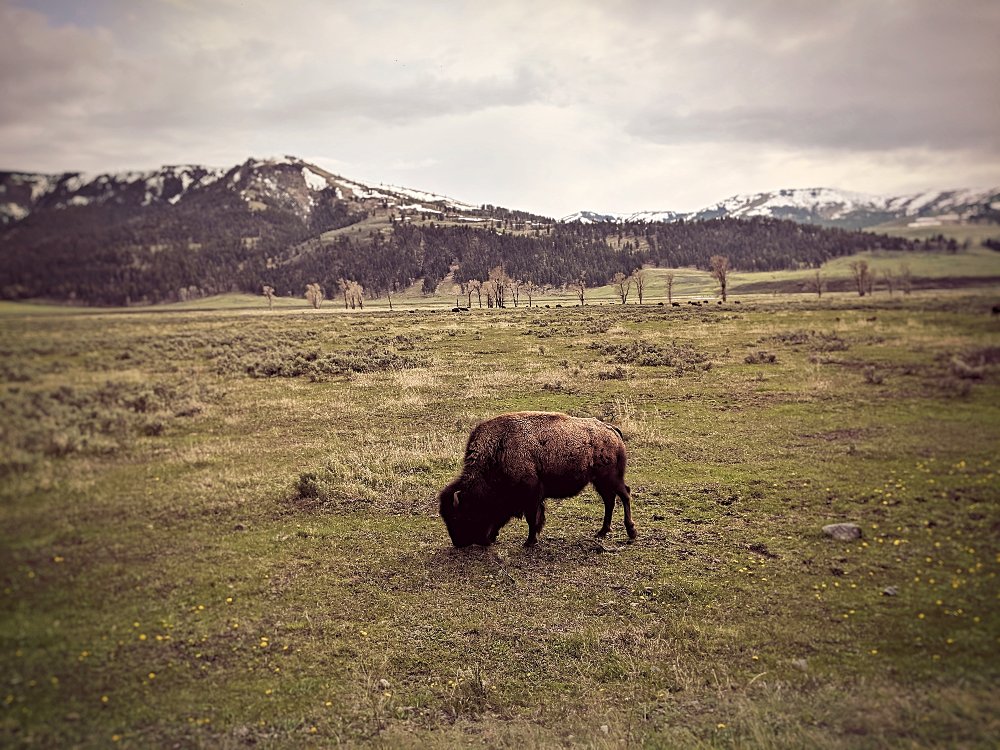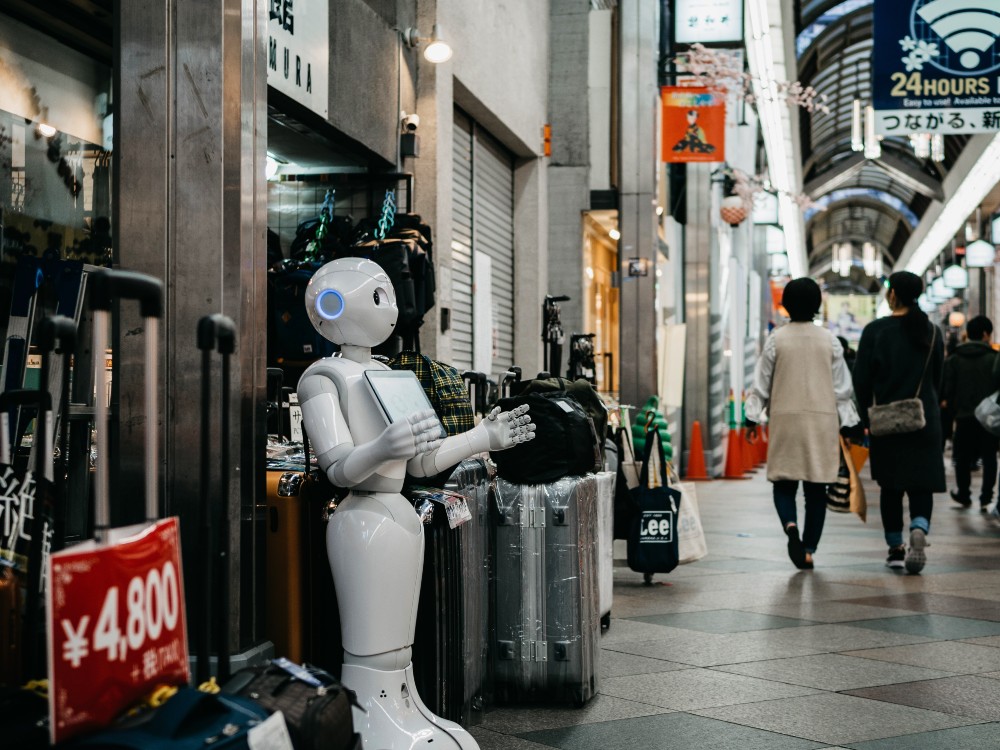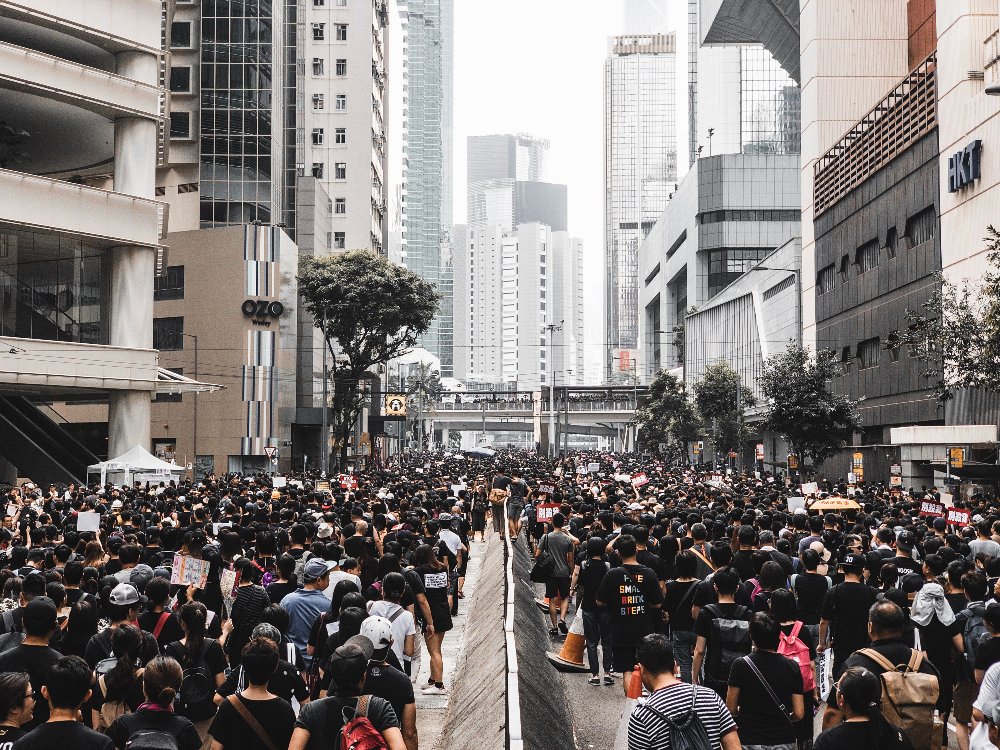It would be an act of hubris to think that our global civilization will last forever. We currently face numerous global threats that could seriously threaten the stability of the current world order, and the convergence of any of these risks could result in a global catastrophe that brings an end to civilization as we know it.
Humanity is not invincible, and the clock is ticking to address these numerous issues in a timely and responsible manner. Here are eight of the biggest human-caused existential risks we presently face as a species.
1. Greenhouse Gas Emissions & Climate Change
Anthropic greenhouse gas emissions are warming and changing the Earth's climate in a bad way, but you probably already know that. If global emissions aren't drastically reduced in the next decade, we may be facing a catastrophically altered climate with some regions of the Earth becoming uninhabitable and rising oceans overwhelming our coastal cities and infrastructure.
Climate change is a huge global issue that not only effects the nearly 8 billion people alive today, but also the untold number of future generations for as long as humanity continues to reproduce (as many as 10 billion more human beings are expected to be born by the end of the 21st century alone).
To avoid the worst effects of climate change, scientists have warned that a drastic energy transition needs to take place. But so far, it hasn't been. Despite the scientific community continuing to warn that catastrophic climate change will result if greenhouse gas emissions continue as normal, not enough policymakers are taking action to avoid the worst case scenario.
2. Environmental Destruction
Greenhouse gas emissions are just one of many ways we're destroying the natural environment. Even without drastically altering the Earth's climate, we're doing a pretty good job of attempting to make the world as uninhabitable as possible for ours and future generations.
For one, we've been producing incredible amounts of plastic and discarding our plastic waste into the environment at an increasing rate. Scientists are finding microplastics everywhere they look, even on the tops of isolated mountains and in Arctic snow. And the way things are going, the amount of plastic in the ocean might eventually outweigh all of the fish on Earth.
 The trash is piling up in our natural environment. Image: Tobias Tullius.
The trash is piling up in our natural environment. Image: Tobias Tullius.
In terms of environmental impact, the agriculture sector is another huge driver of environmental destruction and unsustainable use of land. The overuse of pesticides and fertilizers to grow food enables these chemicals to make their way into our waterways and soil.
On land, modern agricultural practices are causing topsoil depletion and making nutritious food more difficult to grow. In our oceans and lakes, nitrogen and phosphorus run-off from synthetic fertilizers is causing massive dead zones to crop up, where oxygen levels plummet and marine life can no longer survive.
Another critical issue contributing to environmental destruction is poor waste management, particularly in developing countries where the needed infrastructure is not in place to handle the amount of waste being generated (although highly-developed nations aren't very good at this, either).
As the global population continues to grow through the end of this century, particularly in poorer regions of the world that already face critical waste management issues, our global waste problem is likely to get worse if drastic solutions aren't implemented.
Taken together, the increasing proliferation of harmful plastics, the use of chemicals and synthetic fertilizers in agriculture, heavy metal contamination from resource extraction and industry, poor waste management practices, and a host of other environmental issues are all contributing to a decaying natural environment. Given how much we depend on the natural world for the resources we need to survive, this puts humanity in a perplexing and precarious situation.
3. Accelerated Biodiversity Loss
It's estimated that the current rate of species extinction is 100 to 1,000 times higher than the normal extinction rate (ie. if human activity weren't driving these extinctions). This is at least an order of magnitude higher than any other extinction events that scientists have been able to identify from the fossil record.
What we face now is known as the sixth mass extinction with all prior mass extinctions (other than the one that killed off the dinosaurs) having occurred hundreds of millions of years ago. To put things bluntly, the rate of biodiversity loss we're currently faced with is unprecedented, and the most recent event that even comes close happened 65 million years ago.
Environmental destruction and human-caused climate change are some key drivers of this accelerated extinction rate. With increasing levels of toxins and waste entering our natural environment, organisms are facing environmental pressures completely beyond the bounds of their naturally evolved adaptations. As the climate continues to get warmer due to human emissions, it's expected that the rate of extinction will only continue to climb as an increasing number of species across the world faces new pressures from an altered climate.
Once we've started down this path, there's little we can do to turn it around. At best, we can strive to stabilize our current predicament—although this would require considerable action on the part of policymakers.
It's not just the extinction of megafauna such as polar bears that's of most concern, although they have become the poster-children of climate change and the warming arctic. The worst-case-scenario is that the creatures at the bottom of the food chain may begin to die off as present conditions become untenable, resulting in instability all the way up and across entire ecosystems.
 A lone bison: a symbol of how fragile the natural world can be. Image: Jacob Stone.
A lone bison: a symbol of how fragile the natural world can be. Image: Jacob Stone.
The bottom of the food chain consists of the bacteria in our soil, photosynthesizing plants, phytoplankton, as well as insects and other small organisms. These are all particularly susceptible to environmental toxicity caused by human activity, and any instability here could have drastic and unforeseen consequences across the entire global biosphere.
The amount of pressure we're exerting the Earth's biosphere in the form of the pesticides and chemicals we use to grow our food, the waste we discard, and the fuels we use to power our global civilization all compound together. These inputs are being caused by us, and we're the ones who need to make significant changes if we're to avoid the worst-case scenario of a global mass extinction that's unprecedented in the fossil record.
4. The Threat of Nuclear Weapons
The first nuclear weapon was dropped on civilian populations in August of 1945. Since then, nuclear weapons have become significantly more powerful and plentiful—luckily, none have been used in conflict since WWII. That doesn't necessarily mean it will stay that way.
As more and more states accumulate nuclear weapons technology and become increasingly sophisticated in their arsenals, the chances of conflict breaking out are only likely to increase. One particularly dangerous flashpoint is unfolding along the India-Pakistan border, where two nuclear-armed states have been poised for a nuclear conflict for decades.
The United States and Russia still possess most of the world's nuclear weapons (each possessing thousands of nuclear warheads). India, Pakistan, the United Kingdom, France, Israel, and China are all known to possess modest nuclear warhead arsenals (each numbering in the dozens or hundreds). North Korea has recently developed its nuclear capability and continues to develop its ballistic missile delivery system, and there are fears that Iran may be keen on pursuing a similar path.
Overall, it's amazing that a large-scale nuclear war hasn't already broken out, and way may have somehow won the lottery on avoiding this outcome so far.
That doesn't mean our luck will continue on indefinitely—taken with the current level of political instability, a paradigm shift in the global balance of power (ie. where China becomes the dominant global economy rather than the United States) may create the conditions for a future nuclear conflict to break out. International pressures induced by climate change could also be a factor in fostering future conflicts.
Pushing back against these nuclear-armed states is the movement to ban nuclear weapons altogether, most recently with the efforts of the International Campaign to Abolish Nuclear Weapons and their effort to fully implement the Treaty on the Prohibition of Nuclear Weapons. Since no nuclear-armed states have yet signed on to this treaty, it's yet to be seen how effective this campaign might be in mitigating this particular existential risk.
5. Increasing Risk of Global Pandemics
Several global pandemics have occurred throughout human history, often wiping out a significant portion of the population and causing social upheaval as a result. Given the difficulties we currently face with unsustainable animal agriculture, the development of antimicrobial resistance, and rapid globalization/urbanization, it seems more than plausible that a serious global pandemic could strike again.
 Abstract photograph of a microorganism. Image: Joel Filipe.
Abstract photograph of a microorganism. Image: Joel Filipe.
Climate change, environmental destruction, and biodiversity loss also increase the likelihood that a global pandemic could occur, and could help to create the conditions in which a pandemic could be particularly deadly.
In addition to the risk of a global pandemic arising naturally as a result of human activity, there's also the increasing risk with advancements in biotechnology that an engineered pandemic could be even worse than a naturally occurring one. The threat of biological warfare and engineered pandemics has been real for decades, but it's yet to be implemented.
Considering that all of the equipment and information needed to produce such a weapon can be obtained through the internet, it may only be a matter of time until someone creates a deadly supervirus in their basement and unleashes it on a densely populated urban area.
6. Artificial Superintelligence
With advancements in machine learning techniques enabling our automated systems to become increasingly sophisticated at a rapid pace, it's only a matter of time until a true general Artificial Intelligence is created. Such an A.I. could be smarter than human beings in every conceivable way, being able to process information (ie. "think") significantly faster, capable of deeper and more complex problem-solving, and able to access the database of all human knowledge instantaneously.
Such a superintelligent A.I. would be a formidable force. It could potentially take over and dominate the internet and every computer connected to it, including the global financial system, energy grids, and all of the services and infrastructure we rely on to keep modern society running. With that capability, a superintelligent A.I. would then be able to do with us as it pleased, and we likely wouldn't have any way of stopping it once it was unleashed and embedded in all of our digital systems.
Experts in A.I. vary wildly in their predictions as to when we might expect a true general artificial intelligence to arise, with many putting the number at anywhere from ten years to over one hundred years from now.
Whatever the more realistic time frame ends up being, Nick Bostrom has done a good job arguing that, if a general A.I. is ever created that's at or near the level of a human intelligence, it's extremely likely that it will be capable of rapidly improving itself and becoming an Artificial Superintelligence within a relatively short time frame (ie. a couple of hours or days, given enough processing power).
 A robo-storekeeper, perhaps on the verge of becoming an Artificial Superintelligence. Image: Lukas.
A robo-storekeeper, perhaps on the verge of becoming an Artificial Superintelligence. Image: Lukas.
In order to conceptualize what a superintelligent A.I. might be like, just consider the difference in intelligence between a human and a chimpanzee. Or, to get really out there, a human and an ant.
There's no physical law stating what the limits of intelligence might be, so any true A.I. that does emerge may only be bound by the limits of available computing power. As global computer processing power continues to increase, an A.I. gaining access to this expanding resource may quickly make human beings obsolete.
7. Virtual Reality Stagnation
One way to avoid this A.I.-induced collapse of civilization may be by escaping into virtual worlds—permanently.
Video game addiction, and internet addiction in general, is a common affliction in many developed nations. As technology continues to improve, we’ll eventually reach a point where the virtual worlds we create look and feel just as real as the real worlds we're born into.
At this point, any meaningful distinction between reality and simulated reality may begin to erode for large numbers of people. It may not make sense for people to continue engaging with what the real world has to offer, when they could instead migrate into a virtual world that enables them to pursue a life they find more fulfilling.
If this sounds too much like science fiction, consider the progress that’s been made so far. Virtual reality headsets allow users to seamlessly move through real environments as though they were in the real thing. Tracking software makes these worlds seem real and immersive. And hardware is getting better as well, letting users physically feel the simulated world that they’re immersed in.
We may see a large rise of people who become voluntary non-participants in the “real world” in favor of spending all of their available time in a virtual world of their choosing. This could be enabled through programs such as Universal Basic Income, which in the future may reach a point of being enough to cover basic living expense (such as food and shelter) and enable people to exist in virtual worlds while never needing to work.
The social upheaval caused by such a transition could be immense, resulting in a slow and gradual decline of human civilization into a strange, technologically-enabled Dystopia.
8. Total Collapse of the Global Economy
We’ve seen recessions in the past, and these are typically part of larger cycles in the global economy. Investors distinguish these events as bull markets and bear markets—times of increasing market capitalization, and times of decreasing or stagnant market capitalization, respectively. But there are several factors that could contribute to bringing this whole system down.
 A protest taking to the streets. Image: Han Min T.
A protest taking to the streets. Image: Han Min T.
The global economic system has only been around in its current form for a few decades, and it’s still something of an ongoing experiment. Starting from an economic low-point at the end of WWII, the global economy has steadily grown since that time, bolstered in large part by population growth, cheap labor, and steady development.
Starting in the 1940's, the lives of billions of people became gradually became better from decade to decade. The catch-22 is that, in each subsequent decade since the start of this great growth experiment, the relative gains have been decreasing, and in some cases standards of living have stopped improving altogether.
There is a natural limit to growth. No system of finite resources is capable of producing infinite growth, and that may be what we’re seeing in today's global economy. While economies continue to grow, more and more of this wealth is being concentrated in the hands of the people at the top, while working class citizens have seen their relative earnings decreasing over a similar time period.
Financial innovations such as access to cheap credit, mortgages, credit cards, and fixed-rate financing have enabled this system to go on uncontested for decades. These innovations have enabled people to trade their lifelong labor for luxuries such as homes, cars, designer clothing, and regular holidays to all-inclusive resorts.
With working class people in the developed world continuing to take on more debt than ever before, would it be cynical to suggest that such a debt-based system can't go on forever? As this current paradigm continues to expand and more and more people find themselves permanently in debt, it begins to look more and more like the feudal system of old. It would appear that the peasantry beholden to a landowner have been replaced by working-class homeowners beholden to the big banks, respectively.
As things currently stand, our global economy is propped up by rising debt levels, unsustainable resource extraction, and the natural growth that occurs as the population of working adults increases. There are limits to each of these inputs, and putting too much pressure on the global system may cause the entire thing to collapse.
Each one of these existential risks is caused by humans, and human decisions need to be made in order to mitigate them. None of these factors taken alone are enough to bring down global civilization, but none of these risks exist in a vacuum.
In many cases, these risks play on one another and cause other risks to become more likely. For example, climate change and environmental destruction are bad enough on their own, but they're also likely to cause a large increase in human migration over the course of the next several decades. This mass migration could cause regional instabilities and make conflicts more likely, which in turn makes nuclear conflicts more likely as well. And, if a nuclear conflict were ever to occur, a global economic collapse would surely result.
The primary danger isn't that any one of these risks take on their own could bring down human civilization, but that a convergence of catastrophes could make things significantly worse. It's not climate change or biodiversity loss or superintelligent A.I. that will cause human civilization to fall apart—it's more likely to be a convergence of many of these factors happening simultaneously.
Cover image by Aaron Thomas




